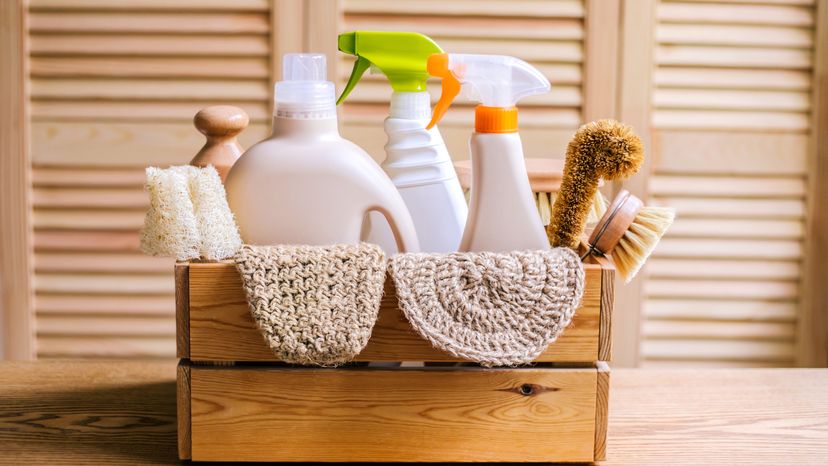
Ammonia not only has a strong sting; it also leaves quite a stain. Use the following methods to get rid of ammonia stains.
Advertisement

Ammonia not only has a strong sting; it also leaves quite a stain. Use the following methods to get rid of ammonia stains.
Advertisement
Acetate, Acrylic Fabric, Burlap, Carpet/Synthetic, Carpet/Wool,
Nylon, Olefin, Polyester, Rayon, Silk, Spandex, Triacetate, Wool
Advertisement
Sponge (the method of using light strokes with a dampened pad working outward from the center of the stain) with cool water. If stain persists, thoroughly flush (the method of applying stain remover to loosen staining materials and residue from stain removers) it with cool water. If the color has been altered, or to prevent fading or bleeding, neutralize the spot with a few drops of a mild acid such as lemon juice, white vinegar, or 10% acetic acid solution. Sponge thoroughly with cool water. Silk and wool are weakened and sometimes destroyed by alkalies such as ammonia, so be especially prompt in treatment.
Acrylic Plastic, Alabaster, Aluminum, Asphalt, Bamboo, Brass,
Bronze, Cane, Ceramic Glass/Tile, Chromium, Copper, Coral,
Advertisement
Cork, Fiberglass, Glass, Gold, Grout, lron, Ivory, Jade, Linoleum,
Marble, Opal, Paint/Flat, Paint/Gloss, Pearls, Pewter, Platinum,
Plexiglas, Polyurethane, Porcelain, Rope, Stainless Steel,
Tin, Vinyl Clothing, Vinyl Tile, Vinyl Wallcovering, Zinc
Rinse well with a sponge dipped in cool water. Wipe dry with a clean soft cloth. Treat pearls stained with an alkali such as ammonia immediately; they are permanently damaged by alkalies.
Advertisement
Bluestone, Brick, Concrete, Flagstone, Granite, Limestone,
Masonry Tile, Sandstone Slate, Terrazzo
Advertisement
Scrub with a solution of washing soda or detergent (not soap) and water. Rinse well and dry.
Cotton, Linen
Flush area with cool water until all trace of ammonia is gone. Launder as soon as possible. The acid treatment recommended for other fabrics cannot be used on cotton or linen, as they may be permanently damaged by acids.
Advertisement
Felt
With a sponge dipped in cool water and wrung out, gently brush (the method of using a stiff-bristled brush to gently remove dried stains and spots) in the direction of the nap. If any stain remains, neutralize it with a few drops of lemon juice, white vinegar, or 10% acetic acid solution. Sponge thoroughly with cool water. Since felt is composed mainly of wool fibers, an ammonia stain may damage it permanently.
Advertisement
Fur/Natural, Fur/Synthetic
Dip a cloth or sponge in cool water and remove as much of the water as possible. Gently rub with the nap; do not over-wet the pelt or backing. Air dry away from heat.
Advertisement
Leather, Suede
Mix dishwashing detergent in hot water and swish to make a great volume of suds. Dip a cloth in only the foam and gently wipe away any ammonia residue. Rinse with a clean dry cloth. Dry away from heat. To leather only, apply a conditioner like Tannery Vintage Leather Cleaner & Conditioner or Fiebing's Saddle Soap.
Advertisement
Silver
Wash silver in hot sudsy water with a soft cloth. Rinse in hot water and dry immediately with a soft cloth.
Advertisement
Wallpaper
Take special care here, as an alkali like ammonia may dissolve the adhesive behind the paper. Dip a sponge in clear warm water, wring until sponge is damp, then gently stroke the stain, overlapping strokes. Pat dry with a clean cloth.
Advertisement
Wood
Ammonia may dissolve wood polishes. With a sponge dipped in cool water, then wrung out until damp, wipe the area making sure not to spread the stain. Wipe dry with a soft cloth. Polish or wax immediately to prevent permanent wood damage.
Don't be stung by ammonia, especially when it stains your favorite clothing and fabrics. Just use these tips to remove these stains.
©Publications International, Ltd.
Please copy/paste the following text to properly cite this HowStuffWorks.com article:
Advertisement